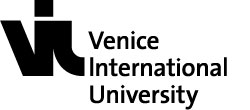S2412 Satellite Remote Sensing – Observing our Changing Earth from Space
Professors
Schedule
Course description
In recent decades satellite remote sensing became more and more important as those technologies provide the basic data set for analyzing vitally important problems like air pollution, the Ozone hole and Global Warming. This course aims to lay down the basic knowledge of atmospheric measurement instrumentation and data processing techniques, and to give the student an insight in the application of advanced instrumentation and remote sensing systems for environmental assessments. The course will start with a historic overview of remote sensing instruments, describe the composition of the Earth’s systems, followed by a description of the underlying physics (electromagnetic radiation, electromagnetic spectrum used for remote sensing, interaction of radiation with matter, etc.). The next section will introduce different remote sensing instruments. The measurement principles covered in this course range from camera systems, multi- and hyperspectral imaging, spectrometers, radar (radio detection and ranging) and lidar (light detection and ranging) systems and will describe the different orbits satellites use for monitoring the Earth. Students will learn about satellite measuring principles and what kind of data they produce.
In this course we will also discuss the pros and cons of satellite observations and the state of our planet.
Learning outcomes of the course
By completing this course, the students will have acquired relevant knowledge in satellite remote sensing and gained the skills to be able to:
• recognize basic laws and principles that form the science of remote sensing
• identify underlying physical principles of remote sensing instrumentation to observe the Earth’s systems and their interactions
• choose the right instrument for measuring environmental parameters and identify design and implementation issues of spectral imaging instruments
• form a thought-out rational opinion about the state of our planet.
Teaching and evaluation methods
An important aspect of monitoring the students’ progress will be quizzes and group discussions at the end of each lecture reflecting on the topics covered. About 2-3 tutorial questions will be answered individually via Moodle (or some other software) so that the students can directly get the correct answers. One or two more questions will be discussed in groups with each group presenting their findings to class afterwards. Another aspect of this lecture are group presentations. Each group of students can choose a different satellite remote sensing instrument with its own topic (e.g. visualizing a volcanic eruption, detecting clouds in satellite images, analyzing the extent of the ozone hole, etc) from a list of satellite instruments (e.g. Meteosat, OMI, TROPOMI, GOME, SCHIAMACHY, Landsat, CALIPSO, MODIS, etc.). Each group will present their project to the class. As individual assignments, each student has to research satellite remote sensing studies of their home city or country. The students will have to write reports about their findings which will be graded based on completeness and understanding of the underlying measurement concepts as explained in class.
The mid-term exam and the final exam will form another part of the evaluation.
The contribution of the different evaluation methods is as follows:
Class participation (tutorial questions and group discussions towards the end of each lecture, ≈1% each lecture for 24 lectures) 24%
Mid-term exam 10%
Group presentations of satellite remote sensing data processing projects 20%
Report about a chosen satellite instrument (each student chooses a different instrument) 16%
Final exam 30%
Bibliography
Recommended reading of the book “Earth System Science: A Very Short Introduction” by Tim Lenton.
The lecture slides will be provided on Moodle.
Syllabus
Lecture 1: Introduction
- Structure of this course
- Why and how do we observe our planet Earth?
- What is Remote Sensing?
- History of remote sensing
- Assign student groups for the student presentations and group discussions
Lecture 2: Our Planet Earth
- Earth’s compartments
- Energy sources and cycles
- What the Earth is made of
- Reading: Chapter 1
Lecture 3: The Geosphere (part 1)
- The tectonic cycle
- Earthquakes and volcanoes
- The rock cycle
- Reading: Chapter 2
Lecture 4: The Geosphere (part 2)
- Earthquakes and volcanoes
Lecture 5: The Hydrosphere (part 1)
- The hydrologic cycle
- The Cryosphere (Snow and ice, glaciers and polar caps)
Lecture 6: The Hydrosphere (part 2)
- The ocean basins
- Circulation
- Waves and tides
Lecture 7: The Atmosphere (part 1)
- Composition and structure
- Wind and weather systems
- Reading: Chapter 3
Lecture 8: The Atmosphere (part 2)
- Climate system
- Evidence and effects of climate change
- Reading: Chapter 4
Lecture 9: The Biosphere (part 1)
- Life, death and evolution
- The Earth's ecosystems
Lecture 10: The Biosphere (part 2)
- Population and biodiversity
Lecture 11: The Anthroposphere
- A fifth subsystem describing human impact on Earth’s systems
- Resource cycle
- Mineral and energy resources
- Potential impacts of human activities on our planet
- Reading: Chapter 5
Lecture 12: Mid-Term Exam
Lecture 13: Earth system models
- Interaction between Earth’s compartments
- Reading: Chapter 6
Lecture 14: Electromagnetic Radiation (part 1)
- radiation and energy quantities
- the electromagnetic spectrum
Lecture 15: Electromagnetic Radiation (part 2)
- Solar radiation
- The interaction between radiation and the earth's atmosphere
Lecture 16: Blackbody Radiation
- Planck's Law applied to the sun and the earth
Lecture 17: Satellite Remote Sensing Instruments (part 1)
- Multi- and Hyperspectral Imaging Instruments
Lecture 18: Satellite Remote Sensing Instruments (part 2)
- Radar
- Lidar
Lecture 19: Satellite Observations of the Earth’s atmosphere
- Clouds
- The ozone hole
- Pollutants
Lecture 20: Satellite Observations of the Earth’s geosphere
- Land use
Lecture 21: Satellite Observations of the Earth’s hydrosphere
- The oceans
- Sea level rise
Lecture 22: Satellite Observations of the Earth’s cryosphere
- the frozen caps
- melting glaciers
Lecture 23: Satellite Observations of the Earth’s anthroposphere- Evidence of our Tenure
- Reading: Chapter 7
Lecture 24: Group presentations and discussion
Last updated: January 15, 2024




















